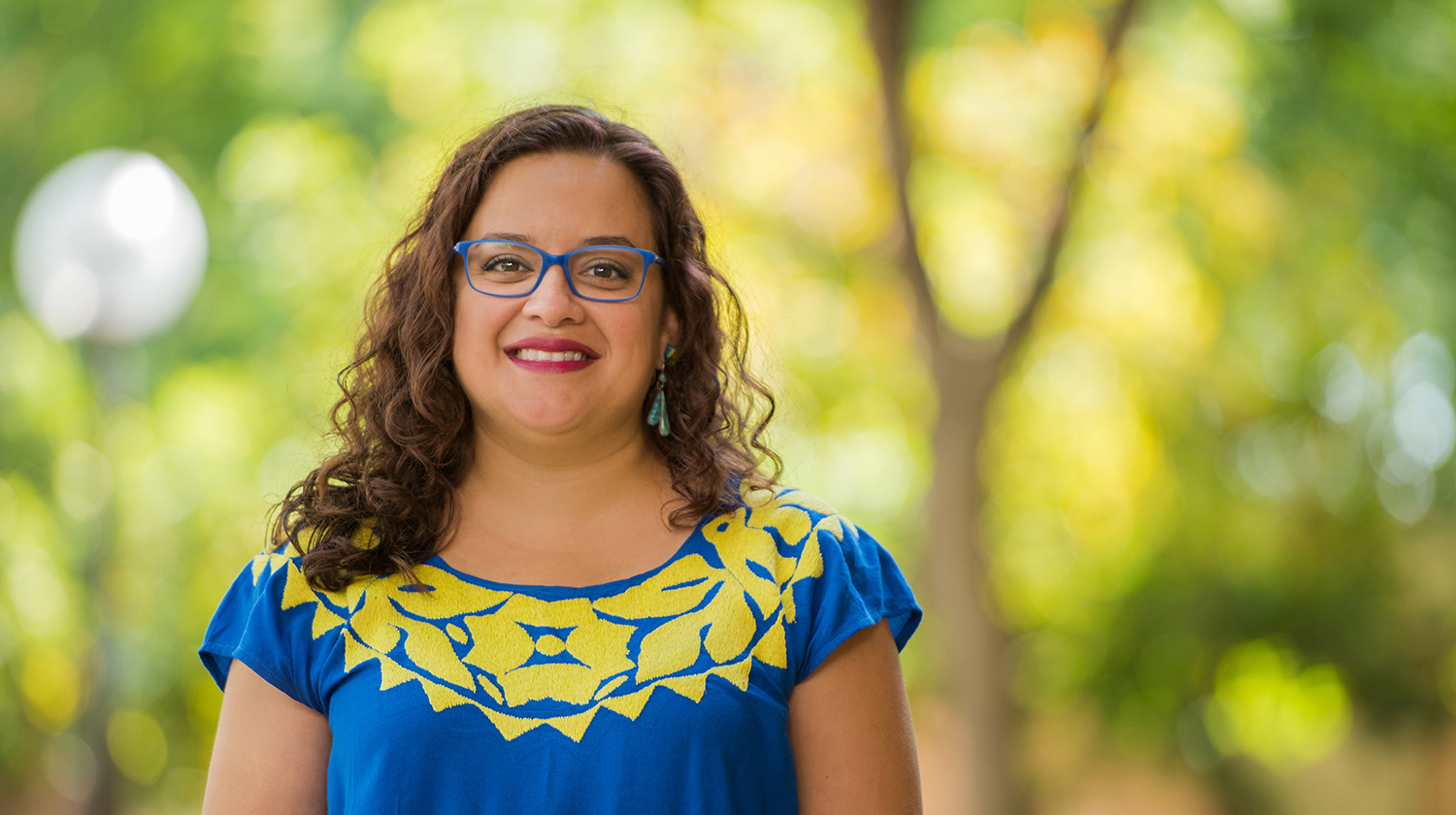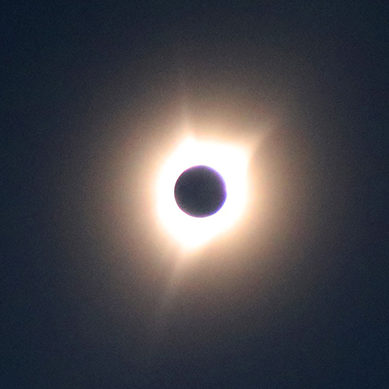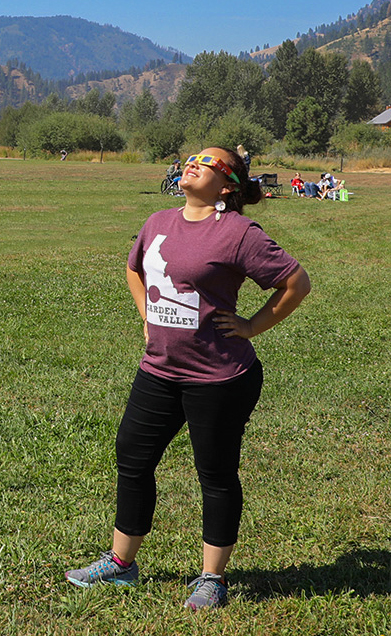
On Aug. 21, Ximena Cid was standing with family and friends in Idaho on the “path of totality,” watching the bright morning sky dim to a twilight hue and feeling the air temperature steadily drop while the moon gradually blocked the sun’s light from reaching Earth.
Cid, an assistant professor of physics at California State University, Dominguez Hills (CSUDH), was far from alone during her observation of the “Great American Total Solar Eclipse.” She joined millions of awe-struck Americans on the path’s 70-mile wide swath of land stretching from Oregon to South Carolina from which the total eclipse of the sun was visible.

“We tried to go to Oregon, but all along the path the hotels and places to stay had been booked for over a year, so we rented a house in Boise, Idaho,” said Cid, who looks forward to sharing her experience and images with her students. “Space is one of the few fields that really excites people–particularly eclipses–because they can see something with the naked eye. Or, when a student stares at the countless galaxies in a Hubble Telescope deep field image, it’s just pure wonder. You can feel their excitement.”
Cid now elicits that wonder representing CSUDH as a partner in a five-year, collaboration between NASA Heliophysics Education Consortium (NASA HEC) and the American Association of Physics Teachers (AAPT).
When a student stares at the countless galaxies in a Hubble Telescope deep field image, it’s just pure wonder. –Ximena Cid
The collaboration between NASAs HEC and the AAPT consists of six members that lead the development of research-based instructional materials taught in the context of introductory and upper division physics and astronomy courses. Members develop materials for various levels of higher education, including introductory science courses, tutorial-like worksheets, homework sets, and other materials for pre-service teachers and higher education instructors to take back to their classrooms.
Capitalizing on the timing of the total solar eclipse, Cid worked for the past year with the NASA HEC/AAPT team, based at Temple University, to develop its first-year curriculum.

“The team has created a number of products that are designed for use in formal classroom environments to help students understand Earth, Moon, and Sun relationships in the context of the total solar eclipse,” said Cid, who presented their eclipse-related program at the AAPT 2017 Summer Meeting in Cincinnati, OH. “These resources are based upon common conceptual struggles students encounter with these topics and have been vetted by the team in their own classrooms.”
During the summer, Cid taught one of the developed labs to three groups of students in CSUDH’s Summer Bridge Academy STEM 0 class, which is geared for students who have shown an aptitude for science, technology, engineering or mathematics (STEM). The workshops started with a brief description of lunar phases and then transitioned to lab centered on the eclipse. Students calculated scaled sizes of the Earth and Sun and then learned about how shadows work. They learned why total lunar eclipses are more easily viewed compared to total solar eclipses even though both lunar and solar eclipses happen with the same frequency.
The students were inquisitive during the 90-minute class.
“I got a bunch of comments. For example, they didn’t understand how the shadows worked, or how important distances are between planetary bodies,” said Cid. “Those kinds of comments are usually a good sign that they’re learning something.”
Click here for information regarding eclipse materials that may be used in college level courses.